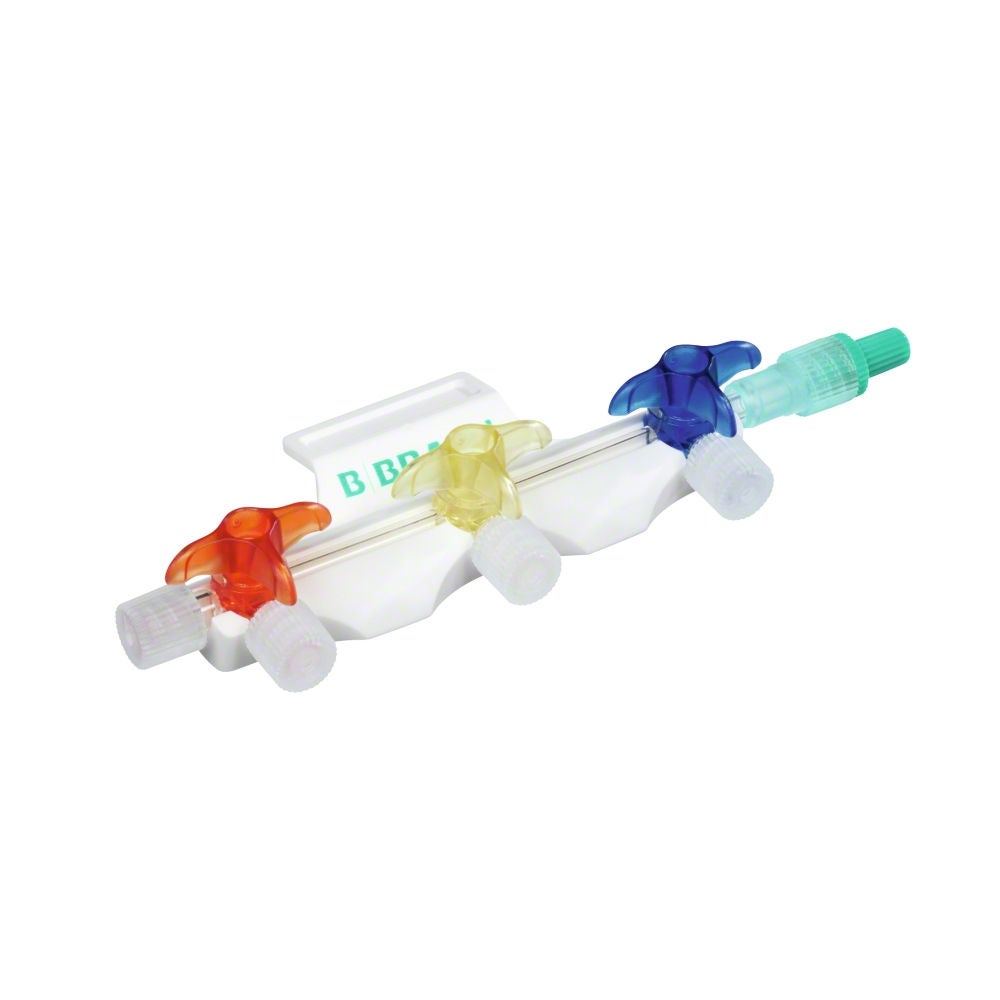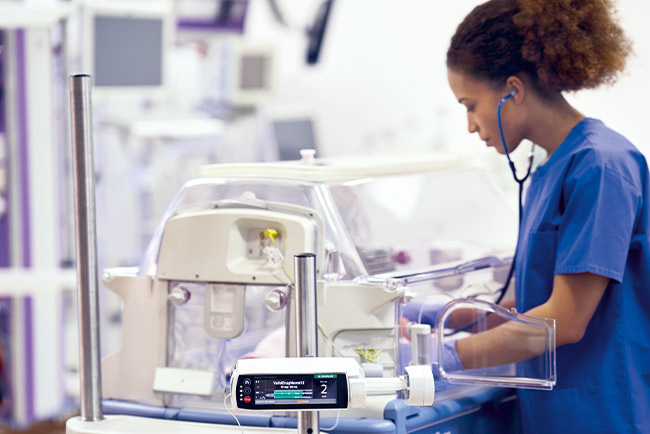You have successfully logged out.
Not registered yet?
Drug Incompatibility in Paediatrics
Potential drug-drug interactions in neonatology and paediatrics.
In infusion therapy, drug incompatibility is a well-known challenge. In paediatrics and neonatology, this is no exception. This makes it even more important to know which risk factors you should be aware of, and which measures you can take to protect your young patients from harmful drug interactions.

Medical Professional
This information is meant for medical professionals only. Please confirm that you are a medical professional before accessing the information.
Confirm Yes, I am a health care professional. Cancel No, I am not a health care professional.What is Drug Incompatibility?
Drug incompatibility is the undesirable reaction between a drug and a solution, container or another drug. There are either physical or chemical types of incompatibilities associated with intravenous administration.1, 2
The main causes of drug incompatibilities in IV therapy are:1, 3, 4, 5
- Incompatible drug combinations (drug–drug incompatibility)
- Inappropriate diluent
- Incompatible material (e.g., PVC)
- Mixture of drugs and adjuvants (e.g., preservative, buffer, stabilizer, solvent)
- When IV drugs are co-administered, physicochemical drug–drug incompatibilities can occur in fluid containers or infusion lines.6
Why Is Drug Incompatibility a Risk in Paediatrics?
Paediatric and neonatal patients in hospitals are often affected by polypharmacy. The concurrent use of multiple medications poses a significant risk of adverse drug events (ADEs) also connected to drug–drug incompatibility.7
Major drug–drug interactions can be life-threatening. At one children's hospital, older patients or patients with longer hospital stays or with complex chronic conditions (CCC) were more likely to be exposed to that risk. In the 10-year-old to 20-year-old age group, potential drug–drug interactions (PDDI) occurred in more than half of the patients.7
“Exposure to major potential drug-drug interactions occurs in 41% of pediatric hospitations in childrens hospitals.”
Risk factors for potential drug incompatibilities
The number of drugs prescribed could be identified as a risk factor for potential intravenous drug incompatibility. In addition, pH level is the major factor for drug incompatibility. Drugs with an extreme pH, such as phenobarbital and phenytoin, are more likely to contribute to the risk.8
In day-to-day operations at the paediatric or neonatal ICU, separate drug administration is often not possible due to the large number of intravenous drugs used and limited venous access.6
Furthermore, high off-label use in paediatrics and neonatology compared to adult patients is an associated risk, resulting in only a limited number of drugs being approved for children.8
What are the consequences for your young patients?
Drug incompatibility can have serious health consequences for patients in paediatrics and neonatology. In addition, the financial aspect for paediatric and neonatal wards and hospitals is not to be underestimated due to prolonged hospitalisations. To prevent the risk of drug interactions, we want to raise awareness of the possible adverse reactions beforehand.
Potential drug interactions may lead to:
- loss of drug effectiveness6
- therapeutic failure
- longer hospitalisation
- severe respiratory complications caused by toxic drug–drug interactions
- tissue irritation due to major pH changes
- damage from toxic byproducts due to chemical reactions
- particulate emboli from crystallisation and separation

How to Reduce the Risk of Drug Incompatibility in Children?
Depending on the various treatment processes and individual risk factors for potential incompatibilities, there are a number of preventive solutions.
In general, the following strategies should be considered to increase safety with regard to drug incompatibilities, especially in intravenous therapy.
Strategies to increase safety in IV therapy
- Compatibility checks with help of the Summary of Product Characteristics (SPC) and other online service
- Use of multi-lumen catheters
- Use of appropriate inline filters
- Separate administration of drugs to prevent drug–drug incompatibilities6
- Flushing the infusion system with a neutral IV solution before other drugs are administered
Highlight Safety Products for Paediatric Patients
Risk Prevention in Pediatrics & Neonatology
Do you need more information about pediatrics or are you interested in our pediatric products?
Get in contact
Pediatrics & Neonatology
[1] Fahimi F, Sefidani Forough A, Taghikhani S, Saliminejad L. The rate of Physicochemical Incompatibilities, Administration Errors. Factors correlating with Nurses’ errors. Iran J Pharm Res 2015; 14(suppl); 87-93.
[2] RCN Royal College of Nursing. Standards for Infusion Therapy. 2010.
[3] Emami S, Hamishehkar H, Mahmoodpoor A, Mashayekhi S, Asgharian P. Errors of oral medication administration in a patient with enteral feeding tube. J Res Pharm Pract 2012; 1: 37-40.
[4] Vijayakumar A, Sharon EV, Teena J, Nobil S, Nazeer I. A clinical study on drug-related problems associated with intravenous drug administration. J Basic Clin Pharm 2014; 5(2): 49-53.
[5] Westbrook JI, Rob MI, Woods A, Parry D. Errors in the administration of intravenous medications in hospital and the role of correct procedures and nurse experience. BMJ Qual Saf 2011; 20(12): 1027-34.
[6] Neininger MP, Buchholz P, Kiess W, SIekmeyer M, Bertsche A, Bertsche T. Incompatibilities on paediatric intensive care – pitfalls in durg information. Pharmazie 2018;73(10): 605-8.
[7]Feinstein J, Dai D, Zhong W, Freedman J, Feudtner C. Potential drug-drug interactions in infant, child, and adolescent patients in children’s hospitals. Pediatrics 2015;135(1): e99-108.
[8] Leal KD, Leopoldino RW, Martins RR, Veríssimo LM. Potential intravenous drug incompatibilities in a pediatric unit. Einstein (Sao Paulo) 2016;14(2):185-9.




